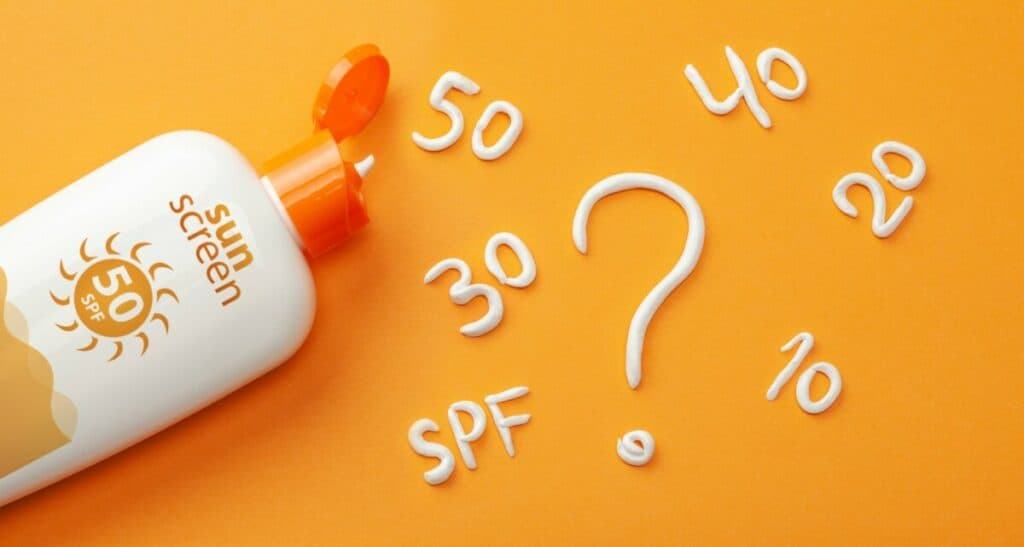
Sunscreen is an effective way to protect skin from harmful sun rays. It does not, however, last forever. When sunscreen is past its expiration date, it should be thrown away, as its use will not be as effective.
Expired sunscreen should be disposed of once past its expiration date. The sunscreen and bottle can be thrown into the garbage when expired or three years after being purchased. It should also be thrown away in the case of change in color, odor, or consistency from the original purchase.
It is important to remain aware of sunscreen expiration and purchase dates. This will allow you to properly dispose of unfinished sunscreen bottles when expired or showing signs of expiration.
How to Properly Dispose of Expired Sunscreen
When sunscreen has passed its expiration date or is showing signs that it should not be used, it should be discarded. Throw away sunscreen and sunblock lotions, sprays, and creams when expired. The bottle and remaining sunscreen can be safely disposed of through regular garbage systems.
There is no need to empty out the sunscreen, rinse out the bottle, or dispose of it in a peculiar way, just toss it in the trash!
If you are, however, still concerned about throwing your sunscreen into the garbage, you can call county sanitation services in your area and ask if they have a lined fill. This will ensure that sunscreen will not cause harm to the land.
How to Know When Sunscreen is Expired
Most sunscreen containers will have an expiration date listed on the outside of the bottle. When the expiration date has passed, the sunscreen should be thrown out.
In situations where the expiration date is not clearly posted, mark the bottle with the date of purchase. This can allow you to be aware of how old the sunscreen is. If you have not finished the bottle of sunscreen within three years of purchase, it is safe to assume that the sunscreen is expired and should be thrown away.
Another way to identify expired sunscreen is through physical manifestations. A change in the sunscreen’s odor is a simple way to know that it is past its expiration date and should not be used. Another indicator is when the sunscreen is no longer its original color, a change in the color appearance of the product often means that it is not as effective and is most likely expired.
Physical change in expired sunscreen products through texture and consistency of the sunscreen is a sign that the product is out of date as well. Clumping, watery, chunky textures, or any loss of original consistency in the sunscreen is a warning flag that it is not fit for use.
A damaged sunscreen container can also be a reason to throw it out. This will increase germ and sunlight exposure, and could also expose the sunscreen to the entrance of other chemicals that may have negative effects. When a bottle of sunscreen is cracked or otherwise largely damaged, the safest option is to throw it away.
The disposal of sunscreen that is past its expiration date, stored in a damaged container, or showing a change in the original condition of the product is very important. All of these signs are reason enough to throw out the offending sunscreen and purchase a new container.
Why Sunscreen Has Expiration Dates
The ingredients in sunscreen, when aged or not stored properly, can spoil and become ineffective. This is why the Food and Drug Administration, also referred to as the FDA, requires sunscreen producers to place expiration dates on their products. Different chemical combinations in sunscreen creams can oxidize or lose their potency over time. The expiration date shows when the specific brand of sunscreen will no longer be as effective and should be disposed of.

How to Prolong the Shelf Life of Sunscreen
Within three years of purchase or creation, all sunscreen would be best to be discarded and replaced. There are, however, ways that you can store your sunscreen safely and help it to last as long as possible.
One of the simplest ways to protect your sunscreen is to keep it out of harsh UV light, intense heat, or sunlight. This means that it is better stored indoors than out in a hot garage, car, or even an outdoor shed. Storing sunscreen bottles indoors when not in use will help limit this exposure and can even help the sunscreen last longer. When outdoors, it is best to keep Sunscreen placed in a bag, under the shade, or wrapped in a towel.
Another way to protect sunscreen bottles is by taking good care of the container. Cracked or damaged containers can be an opening for harmful chemicals or germs to enter the sunscreen. These harmful substances would then be rubbed on your skin when you next apply the sunscreen. For this reason, good treatment of sunscreen containers can be a safe and important practice for users.
When purchasing sunscreen, it is important to look at expiration dates. This will ensure that you have plenty of time to use your new sunscreen before it would be expired.
Is Expired Sunscreen Still Effective?
Using expired sunscreen won’t cause you any intense harm. However, like all products with an expiration date, it is there for a reason. Chemicals in sunscreen lose their potency over time. The expiration date is placed to help educated users know when this is true of their sunscreen so that they can throw it away and replace it with a new bottle that will provide real protection for their skin against the sun’s UV rays.
The questionable factor of expired sunscreen is just that: the unknown. One expired, consumers are unsure of whether the sunscreen still contains 50 SPF, 10, or even 2! Without a chemical lab and series of tests, this cannot be made clear. That is why it is best to simply discard the old sunscreen and make a new purchase. It is better to know how much protection your skill will have against the sun rather than take a chance with expired sunscreen that may provide you with none at all.
Related Topics:
If you like the article above, here are some other similar articles you should check out!
What Should I Do with an Old Router
